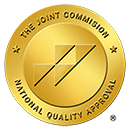Can Emergency Rooms Provide Dental Care?
Can emergency rooms provide dental care? It’s estimated that more than a third of Americans don’t have dental insurance and subsequently, they find the cost of routine care prohibitive. As a result, they wait until dental problems are serious before seeking medical attention. In 2012, over 2 million visits to the ER were for emergency dental treatment.
As long as nothing hurts and teeth feel fine, everything seems okay, but problems can and do crop up very quickly. In some extreme circumstances, they can prove to be life-threatening, especially when an infection is present.
Dental Treatment in the Emergency Room
While most emergency rooms don’t have the facilities to provide routine dental care, they can help in emergencies when urgent care is needed. The ER staff can get patients stabilized, control bleeding, and give treatment for dental fractures. In the case of bacterial infections, they can provide antibiotics and will arrange for transfer to the hospital if necessary. They can also treat broken, dislodged, or fractured teeth and help to control severe pain.
What Constitutes a Dental Emergency?
Any injuries to gums or teeth should be viewed as an emergency situation that shouldn’t be ignored. Getting problems seen to quickly can prove beneficial in the end as it often prevents the need for more extensive treatment later. The kinds of problem or injury the emergency room can help with includes:
Teeth Knocked Out
Getting a tooth knocked out or dislodged is a traumatic experience, but it doesn’t automatically mean the tooth is lost. In some circumstances, the tooth can be replanted, but you need to look after it correctly:
- Don’t touch the root, as it must be kept scrupulously clean.
- If you can see dirt on the root of the tooth, rinse it gently in clean water.
- Easing it back into the socket is the best place for it, but this isn’t always possible.
- Put the tooth in milk until you can get treatment. Milk keeps the tooth moist and germ-free.
- An alternative to milk is clean water with a little salt.
- Ideally, get treatment within one hour as the tooth must be replanted as soon as possible for the best chance of success.
If teeth are partially dislodged but not knocked completely out, seek emergency treatment immediately. You can apply a cold compress to the outside of the cheek or jaw to help with pain or swelling, and it’s okay to take over the counter pain relievers if you need them.
Cracked Teeth
Cracks in teeth should never be ignored because if they’re not treated the cracks can extend below the gum and worsen to the extent that the tooth can’t be saved. While many cracks appear in the enamel and don’t cause pain, those that occur on the biting surface may cause pain when eating or drinking. If you have pain or discomfort from a cracked tooth, it’s best to get it looked at to determine any necessary treatment.
Severe Toothache
Toothaches can come from the tooth itself through decay, or it can come from more serious issues such as gum disease or infections. Often, pain relievers help take away discomfort, but it’s best to investigate the underlying causes especially if there is severe pain or facial swelling.
Swellings or Abscesses
Accesses under or close to a tooth can cause swelling and extreme pain or sensitivity and tenderness. In serious cases, the infection in an abscess can spread to other parts of the body, compounding the problem and even becoming life-threatening. They should never be taken lightly. The infection can be drained, which will relieve pain, but root canal work by a dentist may be needed to restore the tooth and prevent further infection.
Soft Tissue Injuries to the Mouth
Injuries to the gums, tongue or inside the cheek or lips are fairly common and not normally serious. However, in some cases, it’s difficult to stop any bleeding. Under normal circumstances following these tips will stem blood flow:
- Rinse the mouth with a mild saline solution (saltwater).
- Make a small compress from gauze (or even use a teabag if you don’t have gauze), and press it gently over the injury for around 20 minutes.
- A cold compress held against the face can help control swelling.
- If the bleeding still won’t stop, contact the emergency room. Keep the pressure from the compress on the site of the injury until staff can see you.
More Serious Symptoms Associated With Dental Problems
Some dental emergencies can be serious, with symptoms coming on quite quickly. Emergency symptoms include:
- Difficulty in swallowing
- Fever
- Chills
- Facial rashes
If any of these things occur, contact the emergency room immediately for help and advice. They can bring things under control and, if further treatment is needed, make appropriate arrangements.




